Declutter Your Home Checklist: 11 Steps to Clear the Clutter for Good

Today’s post is giving you a checklist to follow to declutter your home. Sharing 11 steps you can take to declutter and simplify your home from top to bottom!
If you’re looking for detailed decluttering checklists for each room in your home, check out Your Clutter-Free Home. A complete decluttering guide, including step-by-step decluttering checklists for every room in your home!
Your Clutter-Free Home provides a “done-for-you” guide you can use to declutter your entire home in a way that feels manageable, stress-free and realistic. Check out Your Clutter-Free Home here.
Declutter Your Home Checklist: 11 Steps To Clear The Clutter
Today’s post will focus on the essential steps to successfully declutter your home. Giving you a checklist to follow to make sure you do everything you need to declutter your home efficiently and effectively.
1. Have a clear vision
Some of the most important steps on this checklist to declutter your home happen before you start doing any decluttering at all! And this is one of those really important early steps.
Having a clear vision of what you want to achieve by decluttering is essential.
It will help guide your decluttering decisions as you decide what’s worth keeping and what’s just adding clutter. It will help keep you motivated, even when you’re feeling overwhelmed, discouraged or like you want to quit. And it will ensure you’re working to create a home and a life that will work best for you moving forward.
Start by thinking about why you want to declutter. What isn’t working for you right now? What are the pain points in your home right now? How will simplifying and decluttering help solve those problems? What do you want more of in your life? What do you want less of? Why are you pursuing a life with less stuff and clutter?
Once you know your specific “why” for wanting to declutter, the next step is creating a clear vision for your home and your life.
What do you want your home and each room in it to look like? What do you want each space to feel like? How do you want each space to function? What activities does each space need to include?
Clearly knowing your vision for each space, and your home and life, in general, will help you make decisions to make that vision a reality.
2. Decide how you’ll declutter
After having a strong “why” and clear vision for your home, the next step is deciding how you want to approach decluttering.
Do you want to declutter room by room? Working to clear the clutter from one room at a time. Continuing to work on that room until it’s done before moving on to the next room.
Or would you rather declutter by category? Decluttering all like items together, regardless of where they live in your home. Like decluttering all the toys at once, even if they are kept in multiple rooms.
Both have advantages and disadvantages, but neither is better or worse than the other.
Decide what works best for you and makes the most sense to you.
3. Decide where you’ll declutter
After you decide how you want to approach decluttering, the next step is making a plan for the specific spaces in your home.
Identify which spaces or categories you’ll declutter and in what order.
For example, maybe you want to declutter each room in your home. List each space and decide what order you want to tackle them in.
Sometimes it works best to start with some easier spaces and build up your “decluttering muscles” before tackling the trickier spaces.
Easier spaces are usually smaller spaces and spaces with fewer emotional and more logical decluttering decisions to make. The bathroom, a coat closet, your cleaning supply cupboard, the pantry, etc. are all examples of spaces that might be easier to tackle.
Other times it works best to start in the spaces that are causing the most stress in your life. Working to simplify and declutter them first so you remove a big source of stress and free up considerable time and space in your home and life.
Again, there’s no right or wrong way to do this. Simply decide what feels right to you and make a list of the spaces you plan to tackle.
4. Decide when you’ll declutter
Next, decide when you’ll declutter. Are you going to do a little bit of decluttering every day until you’re done? Or would you rather schedule a few full days to dive in and get it all done at once?
There are advantages and disadvantages to each. Decide what works best for your preferences, lifestyle, energy levels and time available.
However you decide to declutter, make sure you add decluttering times to your schedule.
Decluttering is really easy to avoid or put off if you don’t schedule it and hold yourself accountable. Add your decluttering times to your calendar and treat them like any other appointment to help yourself follow through and get it done.
It’s also helpful to set some decluttering goals. Maybe deciding you want to declutter your kitchen by the end of the month, for example.
Once you have a specific goal set, figure out what you’ll need to do between now and then to make it happen. Then schedule your decluttering times accordingly.
5. Break each space down
Once you know which spaces you’re going to declutter and when you’ll be decluttering, break each space or category you’re tackling down into projects to fit your schedule.
If you’re doing a little bit at a time, that might mean one drawer, one shelf, one box, one pile, etc. at a time. Slowly working through the space or category.
If you’re planning to declutter for longer sessions, you might be able to tackle bigger projects at one time.
Either way, make a list of what needs to be done to completely declutter the space or category of stuff. This makes it easier to start working through your list and getting the work done!
6. Decide what you’ll do with the stuff you’re getting rid of
Another important step when getting ready to declutter is figuring out what you’ll do with the stuff you’re getting rid of.
Without a plan for the stuff you’re getting rid of, it’s likely it’ll sit around your house. Either continuing to cause clutter, or worse get spread back out into the house, undoing all of your hard work!
Before you even get started decluttering, make a plan for what you’ll do with the stuff you’re getting rid of.
Will you donate it? Sell it? Give it to friends or family?
If you’re planning to donate it, where will you donate it? What are their donation hours or restrictions?
If you’re planning to sell things, where will you sell them? How long will you hold onto unsold items before donating them? How often will you list items for sale?
If you know you’ll have quite a bit of garbage, what will you do with it? Can you add it to your regular garbage collection? Will you need to rent a dumpster? Or make special trips to the dump?
And finally, I recommend setting up a holding zone. A place to keep items in between runs to the donation center or while you’re waiting to sell them.
Ideally, your holding zone should be convenient to add to, to make decluttering easier. But also not highly visible so you or members of your family don’t start second-guessing your decluttering decisions. Putting items in boxes or black garbage bags is a great way to reduce the temptation to take things out of the donation pile!
7. Gather your supplies
The great thing about decluttering is you don’t need much to get started. But there are a few items that can make the process easier.
Having boxes or bags for items you want to donate, sell and put away in other spaces can be really helpful. As well as a garbage bag for any garbage you come across.
It’s also helpful to have a “maybe box” where you can temporarily put items you’re unsure about getting rid of. Then come back to it at a set date in the future and decide if you really need it or not after living without it.
It can also make the process of decluttering more enjoyable if you have your favourite playlist, a podcast or an audiobook to listen to while you declutter. As well as a beverage you enjoy to keep you hydrated (decluttering can be hard work!).
8. Use some key decluttering questions
As you dive in and start decluttering, use some key questions to help you decide what to keep and what to get rid of.
The two most important questions are:
- Do you use the item regularly?
- Do you love or enjoy the item?
Everything you keep should be a “yes” to at least one of those questions.
There are also other things you can ask yourself to help clarify if you should keep an item or not.
Things like when was the last time you used it? Do you have duplicates or items that serve a similar purpose? Are you keeping it “just in case”? Would you buy it again if you didn’t own it? Is the item adding enough value to your life to be worth the time and space it takes up? Check out this post for a huge list of decluttering questions to ask as you declutter.
Another thing to ask yourself is if you could comfortably live without an item. Sometimes you still use or love an item, but also realize you’d be just fine without it too.
9. Start with a blank slate
When you’re decluttering, it can be really helpful to start with a blank slate. Take everything out of the space you’re working on and only add back the items you’re keeping.
This is a great way to force yourself to make a decision about each and every item. Nothing gets a free pass or can be overlooked. Everything must be intentionally returned to the space in order to stay in your home.
It also helps you see the space limits of the space you’re working on and can help push you to be more ruthless as you’re decluttering.
10. Continue working through your list of spaces or categories
Follow along with the list of spaces or categories of stuff you planned to declutter. Work to completely finish decluttering one space or category of stuff before moving on to the next.
Your list also makes it easy to know exactly what to work on next so you don’t waste time figuring out what decluttering project to tackle next.
Remember, decluttering is usually a marathon, not a sprint. It’s ok if it takes time to work through your list decluttering. You didn’t accumulate everything in your home in one day, so you’ll likely need more than a day to declutter it too!
11. Make decluttering a habit
Decluttering isn’t something you do once and never need to do again. Not only do your needs, interests and season of life shift and change, but clutter has a way of finding its way into your home over time.
Plan to do maintenance decluttering sessions regularly to stay on top of any clutter that found its way in. As well as anything you no longer use, need or love in the season of life you’re in.
Decluttering is also a skill you get better at the more you do it. You’ll likely become braver and more ruthless with your decluttering decisions as you experience the benefits of decluttering.
Declutter your home checklist
I hope this checklist will help you declutter your home faster, with less stress and with more ease.
Don’t forget to check out Your Clutter-Free Home for a completely “done-for-you” guide to help you declutter your entire home. Including decluttering checklists for every room in your home!





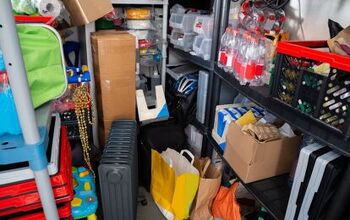



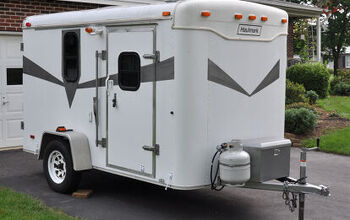

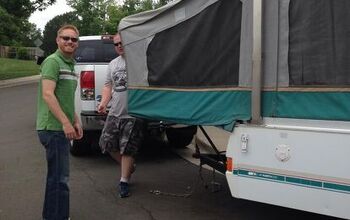
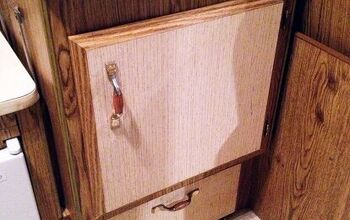








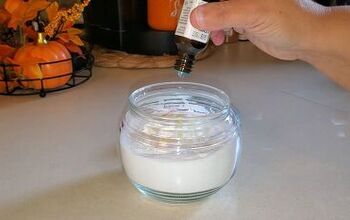

Comments
Join the conversation